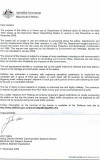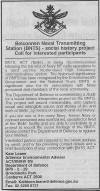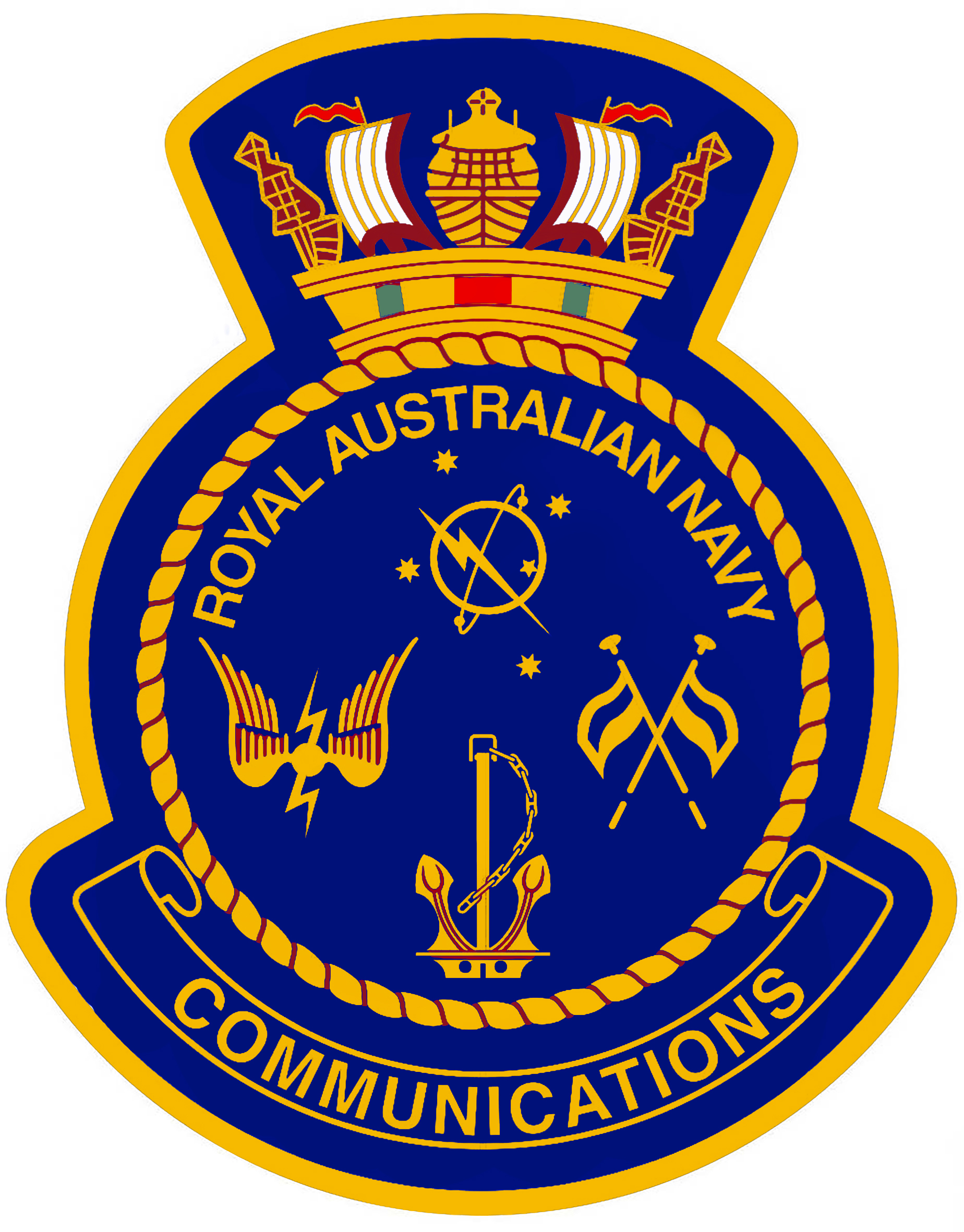THE FUTURE OF BELCONNEN NAVAL TRANSMITTING STATION
Belconnen Naval Transmitting Station (BNTS) decommissioned in 2005. Since then, Dr Peter Dowling, a member of the ACT National Trust and a former RAN Communicator, has been campaigning for the retention of the transmitters, aerials and associated equipment at Bells and for the Station to be preserved as an important part of the Navy’s history and Australia’s defence history.
Peter has been actively involved in organising seminars and meetings to hopefully preserve some of the history of BNTS. His sitreps (and other articles) are linked below for those wishing to follow the story . The battle goes on and looks like continuing for some time.
Museum Proposal for Naval Site – The Canberra Times 2 April 2008
BNTS VLF Antenna Towers Felled – 20 December 2006
Sitrep – November 2006
Canberra Times article – Wed 1 November 2006
Sitrep – October 2006
Sitrep – September 2006
Sitrep – August 2006
Seminar – July 2006
Sitrep – June 2006
Initial Letter – May 2006
Museum Proposal for Naval Site
(BY ROSSLYN BEEBY SCIENCE AND ENVIRONMENT REPORTER – The Canberra Times)
2/04/2008 6:57:53 AM
The Department of Defence is considering a proposal to transform its Belconnen naval site into a national communications museum and wildlife education park. If the concept is accepted by Defence, the 143ha site at the centre of Canberra’s kangaroo cull controversy would remain Commonwealth land and its combined attractions could raise millions of dollars as a tourism venue.
It would also protect the site’s grasslands from future housing subdivision.
The Belconnen land was recently classified by Defence as surplus to requirements and caused a pre-election spat last year between ACT Liberal senator Gary Humphries and ACT Chief Minister Jon Stanhope over its potential for future housing development.
Last year, Senator Humphries announced Coalition plans to sell off 32ha for housing, with Mr Stanhope claiming he had already established a “business case” for ownership of the site, potentially for low-income housing and a nature reserve.
But the recent public outcry over plans to cull more than 400 kangaroos at Belconnen prompted Canberra musician and children’s entertainer Tiga Williams to come up with an original plan to combine the site’s naval history and wildlife population.
“If we can go ahead and move the kangaroos and leave just a small population, then Canberra could have a unique tourism attraction that would be an international drawcard, particularly for Japanese and Korean tourists,” she said.
“If they knew they could get off the plane and see kangaroos up close and within less than an hour from the airport, they’d come to Canberra for sure.”
Williams said her parents and other family members had worked at the heritage-listed naval transmission station and she had grown up “listening to incredible stories” about its role in military communications.
“I was told it was in communication with the HMAS Sydney before it engaged with the Kormoran. It played such an important role in Australia’s war history that it deserves to be better known. Tourists might not drive out there just for that alone, but if you could go there and learn about Australia’s wildlife, that would make it really special.”
Williams is a children’s “eco-tainer”, performing theatre with an environmental message at schools and festivals. She performed regularly with virtuoso Aboriginal didgeridoo player Alan Dargin until his death this year.
“A lot of people in Canberra probably know me as the girl in the kangaroo suit, but there’s a lot more to what I do as an educational performer than just dressing up as a ‘roo,” she said.
Williams said she had approached contacts at Defence with her idea and was encouraged to draw up a proposal to submit to Defence Minister Joel Fitzgibbon.
“They seemed to be really interested. Ideally, if there was a wildlife-carers hospital at the site, tourists could see joeys and other wildlife being fed.”
Performing as a kangaroo at tourism events, Williams said she had gained “a pretty fair idea” of the expectations international tourists had about seeing Australian wildlife.
“They want to see them moving about in the landscape, not in a little enclosure. They want to see family mobs and they want to see them hop over a reasonable distance. Belconnen is perfect for that.”

Belconnen VLF Antenna Towers Felled:
The three 600ft towers at Belconnen Naval Transmitting Station have stood over the Canberra skyline since 1938, providing the support for the 44kHz VLF top-loaded vertical antenna. At 3.24pm and 4.07pm on Wednesday 20 December 2006 the western, and central and eastern towers respectively, were felled when explosives cut guy wires on one side and the other two sets of guys pulled the tower between them.
Videos of this event are online, each only about 2MB, on YouTube.com at:
Tower 1 (72s) http://www.youtube.com/watch?v=KZ_tXJN1YJU
Towers 2&3 (63s) www.youtube.com
Sitrep on the Future of Bells - November 2006

This notice, regarding the dropping of the LF towers at Bells, has been issued by Department of Defence in the Canberra Times for the benefit, it seems, of residents of Belconnen.
It seems that our arguments for retention of, at the very least, one of the masts continues to fall on ears who do not wish to hear. It also seems that Defence, and in particular our Navy, has little concern for its own history and heritage.
Cheers
Peter Dowling
Sitrep on the Future of Bells - October 2006

Another update on the Bells saga. The Department of Defence is doing a social history study of the station and has engaged a consulting firm from Adelaide to do the job. I have been in contact with the consultant and they would like to contact as people as possible who either lived or worked at Bells.
I have attached a notice which will enable any RANCBA member who would like to participate in the project to contact Defence. Participation could range from an interview either over the phone or on-site, photographs or a written account of the experience of working at Bells – as much as the person wishes to give. Can you post it on the web site?
I would strongly urge anyone who would like to participate to contact Defence as this is a unique opportunity to compile a personal history of Bells – it will not come around again.
My team has been informed that the three Low Frequency masts will be dropped sometime within the next four weeks (probably within the next three weeks). We have asked the Minister for Defence that at least one of the masts (the one nearest the building) be retained in situ or if it has to be dropped, to be retained in a horizontal position as a representative sample of the three large towers. I’m not sure how successful this request will be.
Thanks for your help
Cheers
Skeet Dowling
Sitrep on the Future of Bells - September 2006
On Thursday 14 September a small group representing the ACT National Trust and Engineers Australia met with Senator Sandy MacDonald, Parliamentary Secretary for the Minister of Defence , to discuss the future of the decommissioned Belconnen Naval Transmitting Station. The delegation consisted of:
John Anderson, President, Canberra Division, Engineers Australia (EA,
Keith Baker, Chairman, Engineering Heritage Australia, EA,
Robert Breen, Chairman, Engineering heritage Canberra, EA (former RAAF comms officer,
Paul Cohen, Chairman, National Trust of Australia (ACT) Heritage Committee (former Army engineer),
Dr Peter Dowling, Heritage Office, National Trust of Australia (ACT) (just a former humble sparker (s)).
The meeting was at the invitation of the Senator and was a response to the communiqué coming from the July seminar in Canberra regarding the future of Bells which was sent to the Minister for Defence.
Defence has the property on their disposal list and they intend to sell the instillation and the land sometime in the future.
It was made clear to us that the three LF masts will be dismantled (the aerial wiring has already been removed) and that a contractor has already been selected and work will be starting soon. We in turn made it clear to the Senator that the advice coming from Department of Environment and Heritage giving permission to dismantle the masts was flawed and was not consistent with the specific requirements under the legislation. We have asked that a portion (one-third) of the central mast next to the building be retained as a representative sample. Not an ideal compromise by any means.
We came away from the discussions with Senator MacDonald with a feeling of having been sincerely listened to and with the hope that much of the significance of the station might be saved for posterity. But I for one was left uncertain on their intentions with the transmitters and equipment inside. When I visited Bells three weeks ago some of the more modern transmitters had been removed (at least one has gone to Darwin) but much of the original equipment is still in tact. It was a bit like déjà vu walking back into the building after an absence of near 30 years. The transmitter are a unique example of a Defence communications facility containing examples of Low Frequency (LF) and High Frequency (HF) communications transmitting technology spanning the period 1930s to the 21st Century. They are a “National Treasure”, as one of our group made it clear to the Senator.
Our next step, at the invitation of the Senator, is to prepare a proposal outlining the future use of the station. Our preferred outcome is to see it being used as a national radio museum presenting the evolution of communications technology from the very early days up to and including the IT era which we are in today. As the grounds around the building (the former aerial farm) contain endangered native grass species and endangered insect species, which are also heritage listed, as well as a large mob of Eastern Grey kangaroos we would also like to see the area used as a temperate grasslands habit research centre. Both functions could exist and operate side by side. This then will be the basis of our proposal to Defence.
If any RANCBA member has ideas for other options for the station then we will be very glad to hear them. The more ideas, support coming from members, the stronger our proposal will be.
So the ‘battle’ still goes on. It will be going on for some time yet I expect.
Cheers
Skeet Dowling
Seminar on the Belconnen Naval Transmitting Station - Its Heritage Significance and Uncertain Future - 20 July 2006
Organised by: Engineering Heritage Canberra (Engineers Australia Canberra Heritage Group) in conjunction with the National Trust of Australia (ACT).
Thursday 20 July 2006 – 2.00pm to 4.00pm
Venue: Auditorium, Engineering House, 11 National Cir, Barton
The Department of Defence is preparing to dispose of the Belconnen Naval Transmitting Station (BNTS). This iconic feature of North Canberra has high military, engineering and social heritage significance and concerns exist that this important symbol of Belconnen, the ACT and the RAN presence in the capital, will be lost.
In 2005 the Minister for the Environment and Heritage rejected an application to include the Belconnen Naval Transmitting Station in the National Heritage List. This action was taken, even though the Minister accepted that the place may have outstanding heritage value. He considered that decommissioning the place would not reduce the potential National Heritage values and did not pose a present threat to any potential National Heritage values.
On Thursday 20 July, Engineering Heritage Canberra in association with the National Trust of Australia (ACT) will conduct a seminar to provide an understanding of what is intended, an historic overview of the facility and its role in World War II and since, the heritage and environmental aspects of the station and options for its future. Speakers will be Dr Brian Egloff of Canberra University, Dr Peter Dowling of the National Trust, an archaeologist and former RAN communicator and Duncan Marshall, consultant and heritage specialist.
All interested parties are invited and encouraged to attend this important event in Australia’s and Canberra’s heritage.
Sitrep on the Future of Bells - June 2006
Thanks for your help in posting the information regarding Bells on the RANCBA website it was much appreciated.
The campaign to save the dismantlement of the aerials and transmitting equipment from Bells is still going.
I have had several responses from ex-communicators through the RANCBA website (some I haven’t caught up with for 30 years) who have expressed their personal concern for the future of Bells. I am compiling a list of names, ranks and postcodes of those who have already contacted me. The list is growing but I would like to have more names on it.
I have been involved in the campaign through the ACT National Trust and now I have the help of Engineers Australia (EA) whose headquarters are here in Canberra. EA , which has several ex servicemen and former comms electricians (Navy, Army & Airforce) in their membership, are equally concerned about the future of Bells and have shown their willingness to help save the place. Together, we have organised a seminar on the future of Bells to be held here in Canberra on 20 July. Several speakers have offered to give short talks on the history, heritage significance and future of Bells. The main outcome of the seminar for the National Trust and Engineers Australia to develop a ‘communiqué which we will present to the Minister for Defence, Minister for Environment & Heritage, and their respective departments. We will also invite these government bodies as well as the media to the seminar.
The details of the seminar are attached (follow this link). Can I ask another favour from you in posting this letter and the attached flyer to the website.
All members of the RANCBA are most welcome to attend the seminar – there will be plenty of room – they can participate in the final session if they wish or just come along, sit and listen. At the moment we have a gap in our list of speakers – we would like someone to talk about the technical side of the equipment. If there is any member out there who feels they could fill this slot, please contact me at:
peter@act.nationaltrust.org.au
Thanks again for your help
Peter (Skeet) Dowling
CAMPAIGN To Save Bells
I am sending you this email and the accompanying article because of my concern for the future of the Belconnen Transmitting Station.
As most members will know Bells was decommissioned last year and now is no longer used as a transmitting station. As a result the Department of Defence intend to dismantle at least two of the prominent LF towers, most of the HF masts and aerials which will be broken up for scrap metal and dismantle and remove most of the transmitting equipment from the interior of the building.
As a member of the ACT National Trust I have been campaigning for the retention of all the transmitters, aerials and associated equipment at Bells and for it to preserved as an important part of the Navy’s history and Australia’s defence history. The site was heritage listed some time ago but this does not seem to be stopping the Department of Defence from going ahead with their intentions.
As part of the campaign to save Bells I have been interviewed on radio, TV and have had an article written in the local Canberra Times.
This has resulted in some response from a few former communicators and families who once lived there. But this response has not been high. I, along with other colleagues have written letters to the Minister for Environment and Heritage, Senator Campbell, asking him to rethink the decision to dismantle and remove the equipment but our requests have been rather tersely dismissed.
I am therefore asking you, if you could post this letter and the attached article I have written for the National Trust magazine, on the RANCB website.
I would like to hear from as many ex-communicators and present RAN communicators who would support the campaign.
The National Trust has employed a media advisor who is willing to help bring this matter into the wider public arena via local and state media organizations and to keep the pressure on the Government and Department of Defence to change their intentions. A strong show of support from RANCB members would help us in our campaign. We would also like to organise a meeting of ex-communicators here in Canberra (a venue is being organised) who are concerned for the future of Bells. We intend to conduct this meeting in mid July if we can get support from members. the meeting will be an hour or so long and there will be two or three speakers who will speak on the history of Bells and why it should be saved.
If members wish to support this campaign and/or would be willing to attend the meeting please email me at
peter@act.nationaltrust.org.au
If we can get up to 60 people who feel that Bells should be kept as it is and be available for visits then we will have a substantial argument to present to the relevant Ministers and the Department of Defence.
Regards
Peter (Skeet) Dowling
Please follow this link for Peter’s National Trust magazine article.
Please follow this link to read the Navy News article about the closure of Bells in 2005:
www.defence.gov.au

